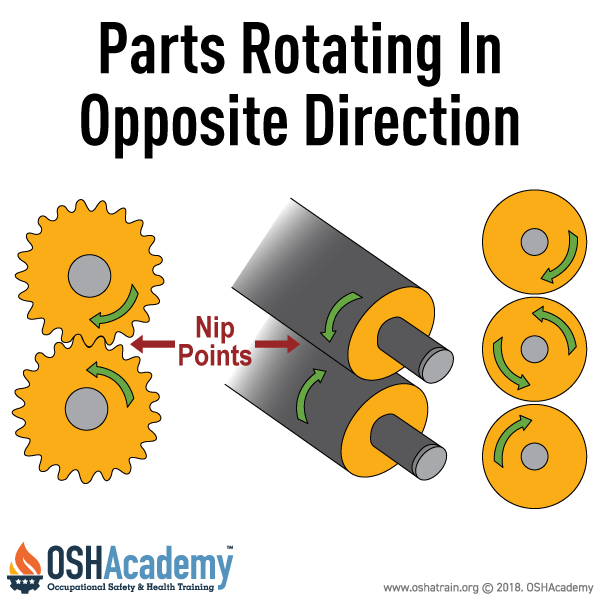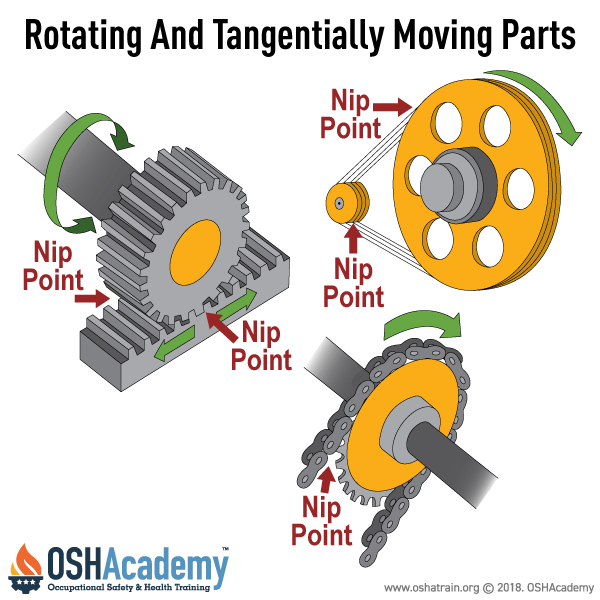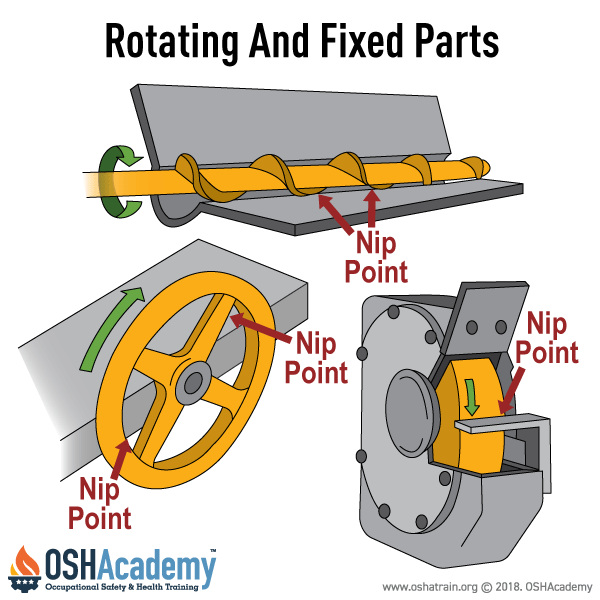Motions
Rotation
"Rotation" is circular motion around an axis or center such as rotating collars, couplings, cams, clutches, flywheels, shaft ends, and spindles that may grip clothing or otherwise force a body part into a dangerous location.
Even smooth surfaced rotating machine parts can be hazardous. Projections such as screws or burrs on the rotating part increase the hazard potential.
In-running Nip Points
In-running nip point hazards are caused by the rotating parts on machinery.
There are three main types of in-running nips.
1. Parallel rotating parts
These parts may be in contact producing a nip point.
Parts can rotate in opposite directions while their axes are parallel to each other.
Stock fed between the rolls may also produces nip points. This danger is common on machines with:
- intermeshing gears,
- rolling mills, and
- calenders.
2. Tangentially moving parts
Tangentially moving nip points are also created between rotating and tangentially moving parts.
Some examples would be:
- the point of contact between a power transmission belt and its pulley,
- a chain and a sprocket, and
- a rack and pinion.
3. Rotating and fixed parts
Nip points can occur between rotating and fixed parts which create a shearing, crushing, or abrading action.
Examples are:
- spoked handwheels or flywheels,
- screw conveyors, or
- the periphery of an abrasive wheel and an incorrectly adjusted work rest.
Knowledge Check Choose the best answer for the question.
1-3. Grinders, rollers, and flywheels have rotating parts that can cause injuries due to _____.
You forgot to answer the question!



